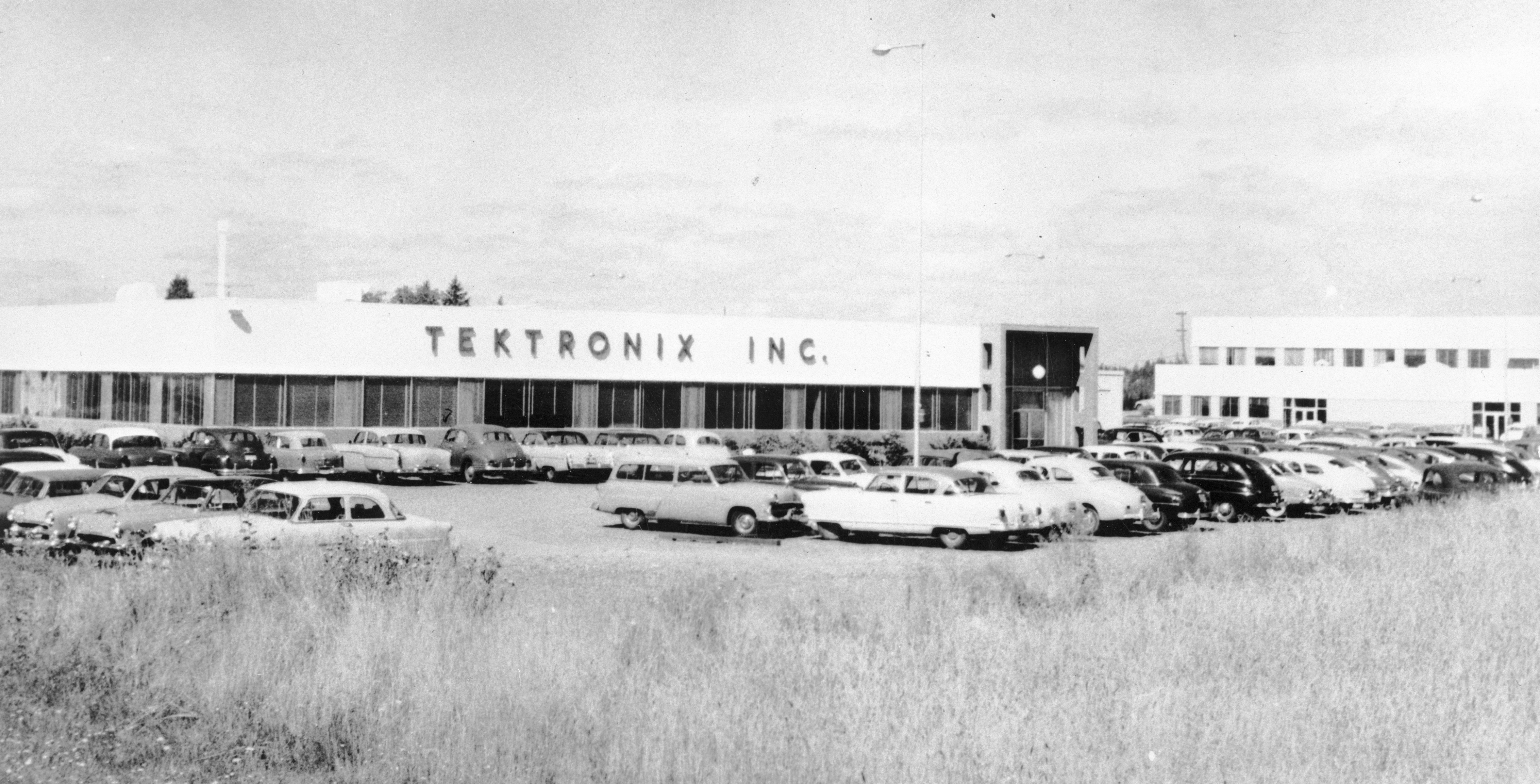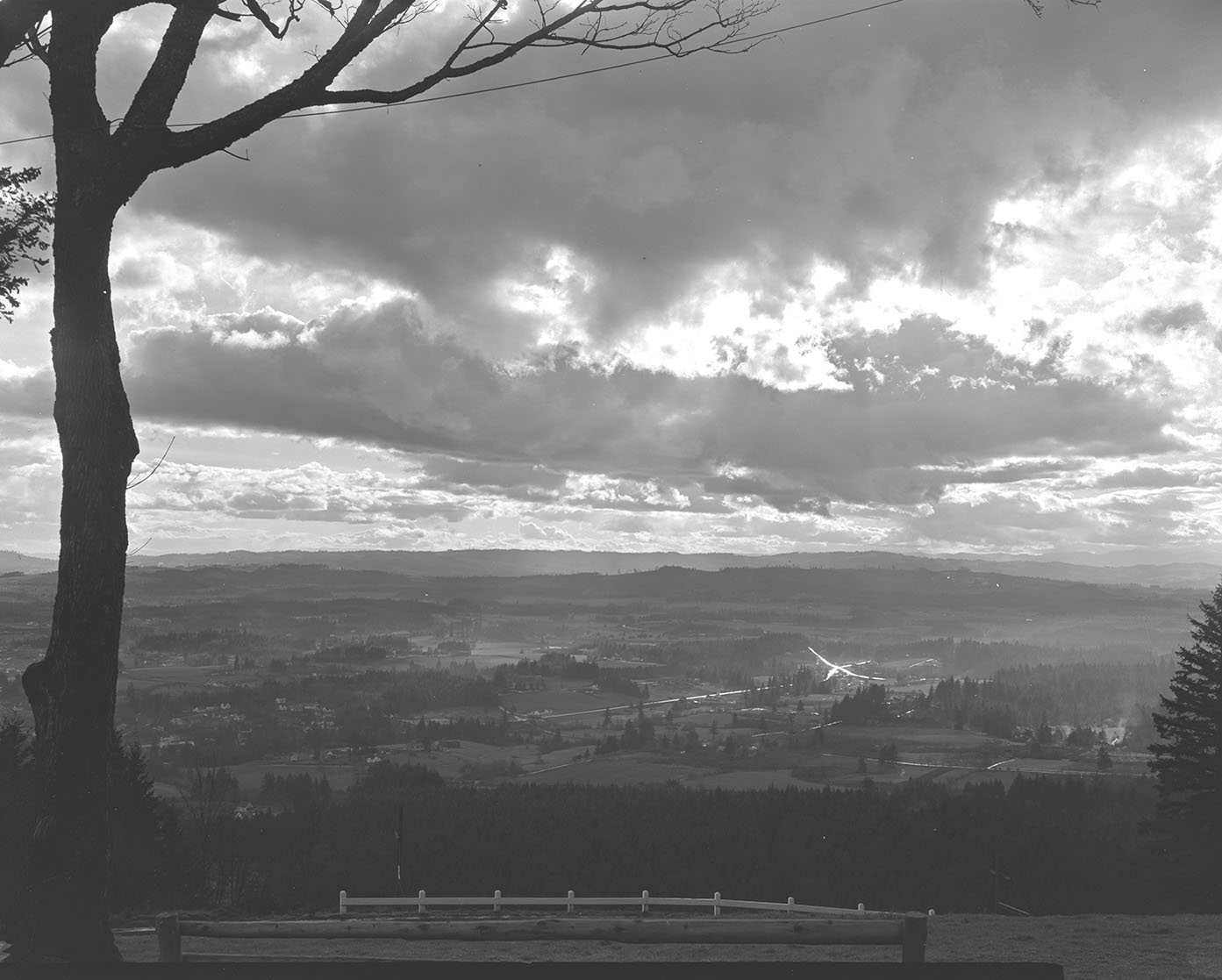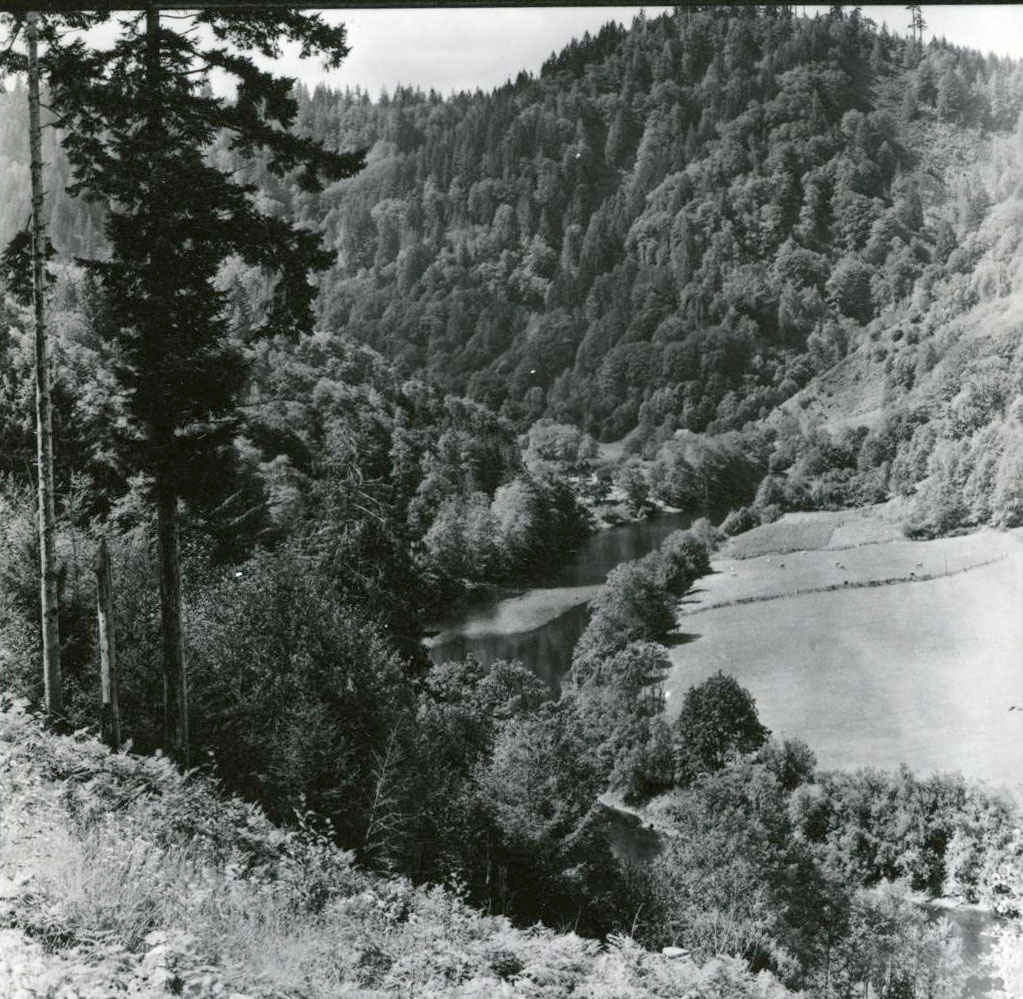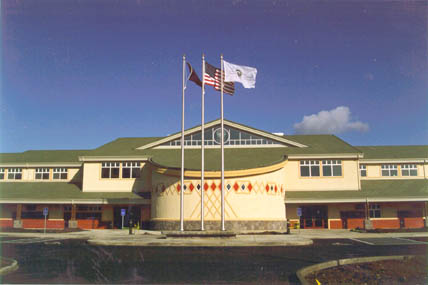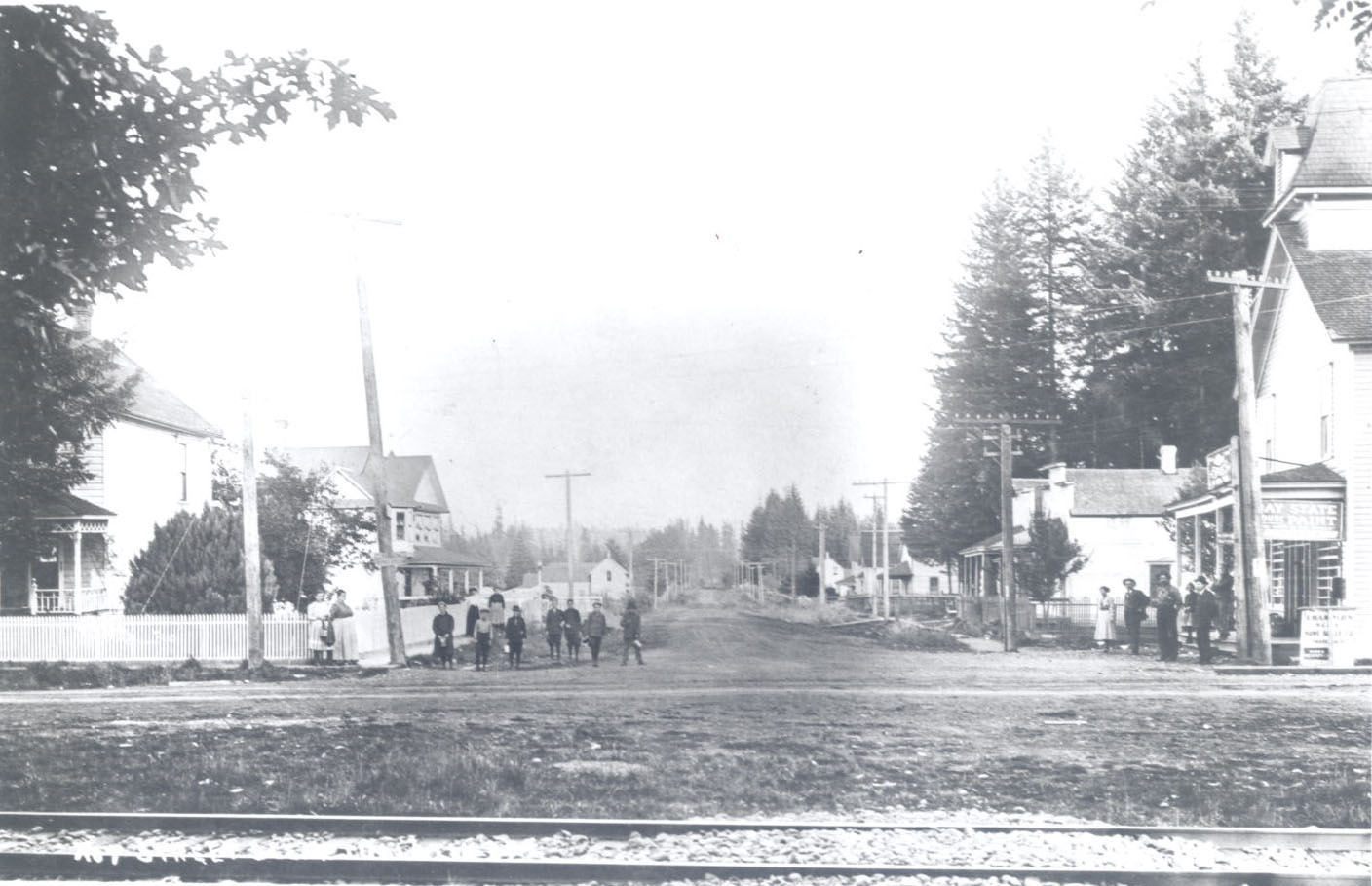Beaverton is the seventh largest city in Oregon and the second largest in Washington County, after Hillsboro to its west. With just over 99,000 residents in 2020, the city is an important economic and tourist center, the home of technology company Tektronix, and headquarters of sportwear giant Nike, Inc.
Located seven miles west of Portland, the City of Beaverton is in the eastern Tualatin Plains area of the Tualatin River Valley in the northwestern portion of the greater Willamette Valley. The land was once a low fertile wetland, with small lakes and creeks, aquatic plants and birds, and fur-bearing mammals such as beaver, marten, and muskrat. Indigenous peoples have lived in what is now Beaverton for at least ten thousand years. Atfalatis (also called Tualatin or Wapato), a subgroup of the Kalapuya people, inhabited about two dozen small villages in the area.
The Atfalatis called their home Chakeipi, or Place of the Beaver. Groups camped seasonally in villages throughout the valley, fished and hunted game, and gathered foods, including camas bulbs, wapato tubers, and acorns that were traded with other tribes. They built multifamily pole lodges, planked with slabs of tree bark in the winter and bundles of long grass in the summer. Atfalati are noted for their skillfully constructed projectile points and large stone mortars and pestles, and for processing grains and acorns. By 1835, malaria had decimated Native people in the region, and by 1850 only about sixty-five Atfalatis remained. The Tribe ceded its lands to the United States government as part of the Willamette Valley Treaty in January 1855, and the Atfalatis were removed to the Grand Ronde Reservation. Most are now enrolled members of the Confederated Tribes of Grand Ronde or the Confederated Tribes of the Siletz, and they are active in keeping their traditional culture alive.
The earliest non-Native settlers in the eastern Tualatin Plains were able to stake the best land claims before the Donation Land Act was passed in 1850. Lawrence and Lucy Hall, who survived travel on the disastrous Meek Cutoff route, took up the first recorded land claim of 640 acres in 1847. They built a homestead and gristmill near what is now Walker Road, where it intersects with Murray Boulevard, and were instrumental in supporting other white emigrants throughout the 1850s.
The Halls lived adjacent to William and Hannah Walker, between what is now Sunset Highway and Walker Road. Near what is now Hall Boulevard, Augustus and Rebecca Fanno grew onions and built a farmhouse, which still stands and is listed on the National Register of Historic Places. Thomas and Berilla Denney built a water-powered sawmill on what became known as Fanno Creek, a tributary of the Tualatin River. Many Beaverton streets are named for other resettlers, including the Davies, Tucker, Allen, Murray, Merlo, and Watson families.
By 1860, the Portland–Tualatin Valley Plank Road Company had laid down a wagon road to aid the transport of farm goods and lumber to Portland. Eight years later, Joshua Welch, George Betts, and William Watson platted the town of Beaverton as a stop along a new railway through the valley. Betts was named the first postmaster, and Alonzo Cady served as the first mayor. The railroad stop slowly grew into a town as families and businesses continued to arrive in the area. In 1885, Dr. Francis Robinson settled on Broadway Avenue, building a home and pharmacy that became Beaverton Bakery in 1925. Edward Squires owned a wagon and blacksmith shop, and local community groups included the Beaverton Grange and the Women’s Christian Temperance Union.
Beaverton was incorporated in 1893. In addition to the region’s reliance on agriculture, new businesses moved in, including Rose Merlo Biggi’s Beaverton Horseradish Factory and August Rossi’s 1900 Saloon. At the turn of the twentieth century, Earl Fisher organized the city’s first hook-and-ladder company. Telephone lines were connected to the town in 1904, and the Oregon Electric Railway established passenger transport to the Tualatin Valley in 1908. Otto Erickson established the Beaverton Garage and hired Guy Carr, who would become a successful car dealer, to assemble automobiles. The Bank of Beaverton opened in 1910 and stayed in business into the Depression years, when it was replaced by First Security Bank.
Several neighborhood additions were developed during the early decades of the twentieth century, and residents built three more churches and a brick high school. Morse Hall became a center for social activity, and Premium Picture Productions made silent movies before it went out of business in 1925. The studio’s land was the site of the Bernard Airport, which was often used by locals who built their own airplanes.
The Tualatin Valley produced wheat and feed grasses, filberts, berries, orchard fruits, and lumber well into the 1950s. In 1950, Sawyer’s Photo Company opened its View-Master plant in Progress, which is now a Beaverton mall. Electronics companies, including Tektronix in 1959 and Electro Scientific Industries in 1962, moved their operations to Beaverton, putting the city on the map as a high-tech center and attracting an influx of middle-class workers. Together with nearby Hillsboro, the area was dubbed the Silicon Forest, and the population of Beaverton spiked from about six thousand in 1960 to over fifty thousand by 1990. At the same time, Bill Bowerman and Phil Knight selected Beaverton as the location for Nike headquarters, named Niketown, which in 2021 includes seventy-five buildings across three hundred acres. The headquarters is technically on an unincorporated "island" of Washington County, surrounded by the City of Beaverton, which allows the company to maintain a tax advantage.
Since 1990, commercial and residential development has changed the face of Beaverton from a bustling town to a modern city characterized by urban sprawl. Mass transit makes the area easily accessible to the Portland Metro area, and the city’s boundaries appear seamless with Hillsboro’s to the west and Tigard’s to the south. Beaverton has over one hundred nature parks, a historic Main Street and a farmer’s market, and many annual community events, including the Beaverton Celebration Parade, the Westside Shakespeare Festival, and Bike Beaverton.
-
![]()
Business district, early Beaverton.
Courtesy City of Beaverton -
![]()
Beaverton, c.1950.
Oregon Historical Society Research Library, Org Lot 1271, B1 -
![]()
Aerial view of Sunset Highway, 1948.
Oregon Historical Society Research Library, Org Lot 1284 -
![]()
Downtown Beaverton historic district.
Courtesy City of Beaverton -
![]()
Augustus Fanno farmhouse, Beaverton.
Courtesy University of Oregon Libraries -
![Nike Word campus, Beaverton]()
Nike Word campus, Beaverton.
Nike Word campus, Beaverton Courtesy University of Oregon Libraries, 2013_VRC_04392
-
![Tektronix, Inc.]()
Tektronix, exterior, OrHi 76876.
Tektronix, Inc. Oreg. Hist. Soc. Research Lib., OrHi 76876
-
![]()
Tualatin Valley.
Oregon Historical Society Research Library, Org. Lot 52
-
![]()
Beaverton annexation history map, 2019.
Data courtesy of City of Beaverton
Related Entries
-
![Alsea Subagency of Siletz Reservation]()
Alsea Subagency of Siletz Reservation
In September 1856, Joel Palmer, the Superintendent of Indian Affairs fo…
-
![Confederated Tribes of Grand Ronde]()
Confederated Tribes of Grand Ronde
The Confederated Tribes of Grand Ronde Community of Oregon is a confede…
-
![Electro Scientific Industries]()
Electro Scientific Industries
Electro Scientific Industries (ESI) was one of the first two electronic…
-
![Five Oaks Museum (Washington County Museum)]()
Five Oaks Museum (Washington County Museum)
The Five Oaks Museum, formerly known as the Washington County Museum, i…
-
![Great Plank Road]()
Great Plank Road
The Great Plank Road, constructed in 1856, connected productive agricul…
-
![Hillsboro]()
Hillsboro
Hillsboro, the seat of Washington County, is in the Tualatin River Basi…
-
![Oregon Electric Railway]()
Oregon Electric Railway
Talk of building a long-distance electric interurban railway south from…
-
Silicon Forest
The Silicon Forest is the name applied to the cluster of high-technolog…
-
![Tektronix Inc]()
Tektronix Inc
Tektronix, one of Oregon's most prominent and innovative high-technolog…
-
![Tualatin, City of]()
Tualatin, City of
The City of Tualatin is twelve miles south of Portland, on the southeas…
-
![Tualatin peoples]()
Tualatin peoples
Tualatin (properly pronounced 'twälə.tun in English) was the name of a …
-
![Wapato (Wappato) Valley Indians]()
Wapato (Wappato) Valley Indians
Lewis and Clark called them the "Wappato Indians," the people who inhab…
Related Historical Records
Map This on the Oregon History WayFinder
The Oregon History Wayfinder is an interactive map that identifies significant places, people, and events in Oregon history.
Further Reading
Mapes, Ginny. The Tualatins. Hillsboro, Ore.: Helvetia Community Association, 2017.
Mapes, Ginny. Chakeipi: The History of Beaverton, Oregon, 1893 to 1993. Beaverton, Ore.: City of Beaverton, 1993.
Buan, Carolyn. This Far Off Sunset Land, Brookfield, MO: Donning Publishing, 1999.
Robbins, William G. Oregon: This Storied Land. Portland: Oregon Historical Society Press, 2005.







